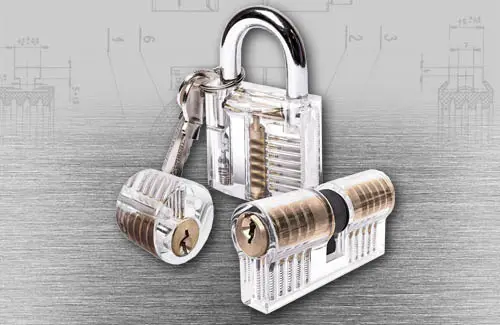The regular price is the current manufacturer's recommended price! FREE shipping for orders over EUR 41,67 within CZ+SK (PPLparcel)

They can be divided into manual and electronic. We will now look at manual locks and simply explain their functionality. That is, key locks.
Their principle is actually simple. It is just a case in which tumblers are stored, which copy the teeth of the inserted key so that they are released and subsequently unlocked.
PADLOCK
How does it work? There are notches in the lower part of the shackle (the pulley that we lock). The discs / tumblers rotate in them, which need to be set to the correct position in order to unlock the lock. Each tooth of the key presses on its own tumbler so that they are centered in one plane and release the roller that blocks them. This causes unlocking and the shackle of the lock can be removed.
CODE PADLOCKS
They have the same principle as classic padlocks or cylinder locks. Only to unlock them, several locking blades / rollers are used instead of a key. These have cutouts on their circumference that block the latch roller. After setting to the correct position (numeric code), the blocked roller is released and the hook unlocks the shackle.
PIN TUMBLER LOCK
How does a mortise lock work? It is actually a cylindrical lock, anchored in the door, into which a key is inserted. Inside there is a cylinder in which there are several tumblers. These are spring-loaded and there are 3-7 of them (depending on the type) and they include pins of different heights. The inserted key, thanks to its teeth, aligns all the tumblers in one plane so that by subsequently turning the key, the cylinder can be turned, which raises the latch and unlocks the lock.
DOZIC LOCK
It is a mechanical lock, based on the function of a blade with springs and a bolt. By inserting and turning the key, the blade is lifted to the correct position, where the latch pin is centered in the cutout and at the same time moves forward. After the bolt is removed, the blade returns / is pressed back to its original place thanks to the springs.
The locks are made for two-way locking and this option is not as secure as a cylinder lock.
Another option for locks can be electronic or magnetic locks. But we will talk about them next time.
To lubricate padlocks and the delicate mechanism of cylinder inserts in the winter, it is good to use a lubricant that will ensure proper defrosting.
Did you know that:
The invention of the lock dates back to 4000 BC and comes from China? Locks were also used in Mesopotamia and were also known to the ancient Egyptians.
Other articles:
Rázové utahováky
Průmyslové hlavice
Sady nářadí
Svinovací metry